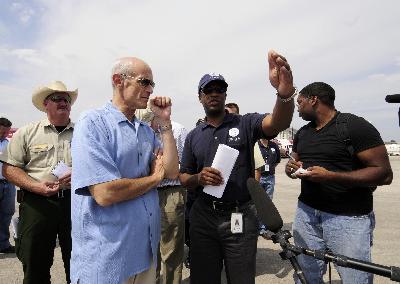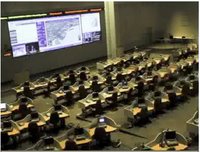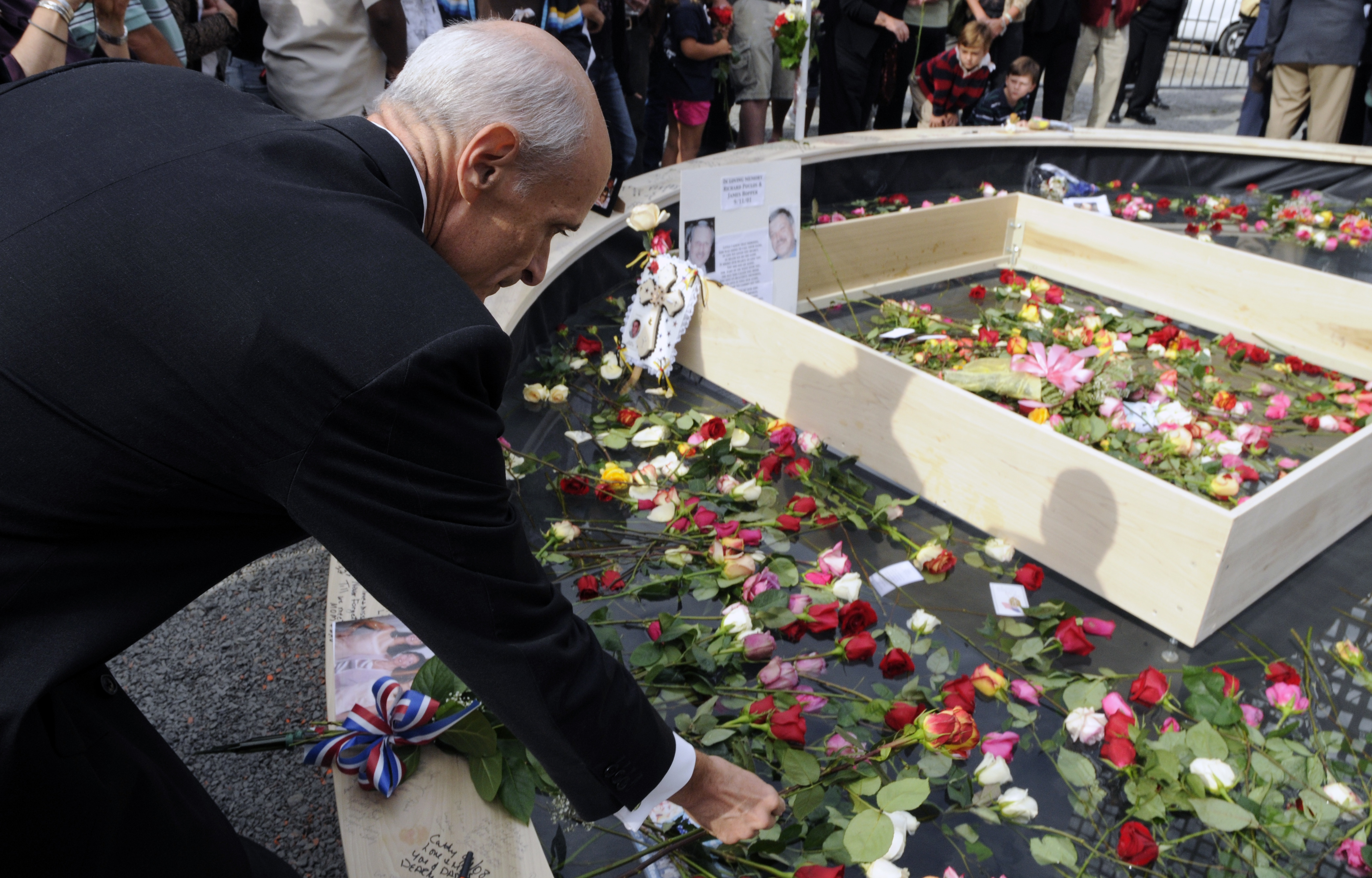We all know how catastrophic the results can be when the right people do not get the right information at the right time. That is why we have made information sharing a national priority, and here at the Department of Homeland Security, a critical part of our mission.
Virtually everyone at DHS has a role in information sharing, which is an essential weapon against threats to the homeland. As those who want to do harm to the nation become more sophisticated, we, too, must be more creative and develop innovative ways to thwart potential attacks. We must continue working to develop coherent policies, create effective governance structures and break down any barriers that prevent us from building sustainable networks and relationships that will secure the nation -- not only now, but in the years to come..
The recently released
DHS Information Sharing Strategy exemplifies the Department’s commitment to doing exactly that. A first-of-its-kind document for DHS, the strategy provides direction and guidance for all of the Department’s information-sharing initiatives. It describes how we can transform DHS into an organization that promotes an environment where information is shared in a strategic, efficient manner.
The Strategy is based on a set of five guiding principles:
- Fostering information sharing is a core Department mission.
- The Department must use the established governance structure to make decisions regarding information-sharing issues.
- The Department must commit sufficient resources to information sharing.
- The Department must measure progress toward information sharing goals.
- The Department must maintain information and data security and protect privacy and civil liberties.
The DHS Information Sharing Strategy is more than a piece of paper. By articulating our priorities in such a fashion, we are sending a clear message: information sharing is no longer optional; it is a vital building block toward a safer and more secure nation.
While our Information Sharing Strategy is a huge step forward, it is only one of a number of ways DHS is moving ahead. One of our most notable accomplishments to date has been the creation of a set of high-level governance structures that will ensure the Department continues to advance with information-sharing initiatives in a unified, coherent fashion.
The Information Sharing Governance Board is an executive-level body that drives Department-wide information sharing initiatives to completion. The Information Sharing Coordinating Council is a working-group made up of action officers from across all DHS Components, ensuring every sector of the Department is represented in information-sharing efforts.
But strategies, policies and governance structures are not enough. We must also work to address cultural barriers that exist across the Department. As the Secretary has said, “We are One DHS.” In order to achieve this vision, we are blending the many tactical missions of the Department. This led us to develop a set of Shared Mission Communities that will cut across the Department and build relationships based around common missions and not organizational structures.
Beyond DHS, we must share information with all federal, State, local, tribal, private sector and international partners as well. That is one reason our Strategy is not only consistent with, but complementary to the President’s National Strategy for Information Sharing, as well as the United States Intelligence Community Information Sharing Strategy.
To sustain a robust federal information sharing environment, we maintain close relationships with the Department of Defense, the Department of Justice and its Federal Bureau of Investigation, the Program Manager for the Information Sharing Environment and the Office of the Director of National Intelligence, to name just a few. However, our responsibility to protect the homeland requires successful partnerships which extend beyond the federal government. We wholeheartedly support the state and local fusion centers across the country with personnel, training and funding. The centers provide deployed DHS analysts the opportunity to work side-by-side and exchange information with their state, local and tribal counterparts, and law enforcement and public safety officers. To date, the Department has deployed 25 intelligence officers to fusion centers across the country with plans to have a total of 35 in the field by the end of the year.
To foster collaboration and share best practices and lessons learned within the fusion center network, DHS sponsors the Homeland Security State and Local Intelligence Community of Interest (HS SLIC), a virtual community of intelligence analysts. Its membership has grown significantly in the past year with members now representing 45 states, the District of Columbia, and seven federal departments. We have also established a HS SLIC Advisory Board, which includes state and local leaders of the HS SLIC to advise the Office of Intelligence and Analysis leadership on issues relating to intelligence collaboration with our non-federal partners. Through the HS SLIC, members are able to post intelligence products so that there is effective vertical information sharing between the states and the national Intelligence Community and horizontally between the states. Fusion center analysts across the country meet via teleconference weekly with their DHS counterparts to discuss homeland security threat issues. Through these activities, DHS is making the HS SLIC a significant contributor to the National Strategy for Information Sharing.
Another initiative in which we are contributing significant leadership is with the
Interagency Threat Assessment and Coordination Group (ITACG), which was established at the direction of the President and the 9/11 Commission Act to facilitate increased sharing of terrorism-related information between the national Intelligence Community and our state, local, tribal, territorial, and private sector partners. By pulling together in one place state, local, tribal, territorial, and federal homeland security, law enforcement, and intelligence officers at the National Counterterrorism Center, the ITACG now serves as a focal point to guide the development and dissemination of federal terrorism-related intelligence products through DHS and the FBI to our State, local, tribal territorial, and private sector partners.
Through these and other efforts, I envision an environment where all of those vested in the protection of the nation are working in concert. I am pleased with how far we have come to develop effective technological solutions as well as reduce the cultural barriers that once impeded the flow of information--much progress has already been made.
Building trusted relationships takes dedication and patience. Creating a cohesive environment within an organization as vast as DHS and the federal government at large takes commitment and perseverance. Protecting our nation from the myriad of threats that we face takes courage and resolve. We are and must be up to the task.
Charlie Allen
Under Secretary for Intelligence and Analysis and Chief Intelligence Officer
Labels: information sharing, security













